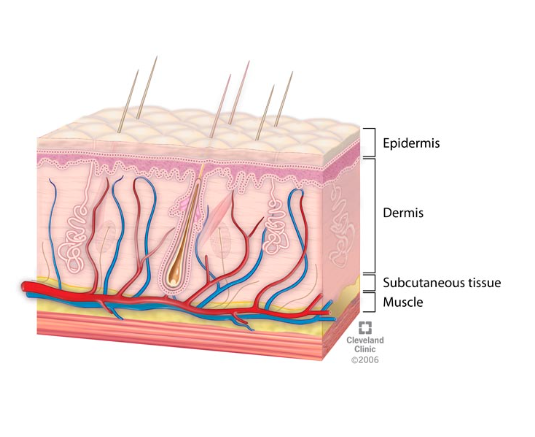Fingerprint Analysis
1/44
There's no tags or description
Looks like no tags are added yet.
Name | Mastery | Learn | Test | Matching | Spaced |
|---|
No study sessions yet.
45 Terms
Plain Arch
A type of print pattern in which the friction ridges enter on one side of the print and flow out the other side with a rise or wave in the center.
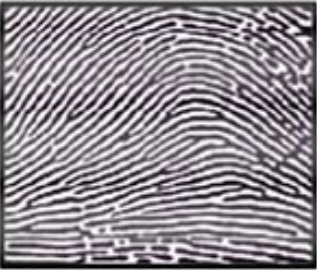
Tented Arch
A type of print pattern similar to the plain arch but that possesses an angle, upthrust (central rise), or two of the three basic characteristics of the loop.
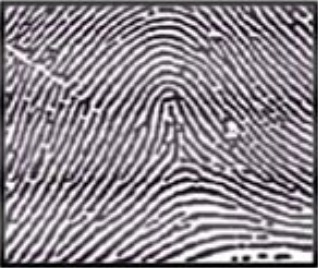
Radial Loop
Those types of pattern in which the loop flow in the direction of the thumbs. The above pattern would be a radial pattern if on the right hand, and an ulnar pattern if on the left hand. The above pattern is also sometimes called a left slant loop, regardless of which hand it appears on.
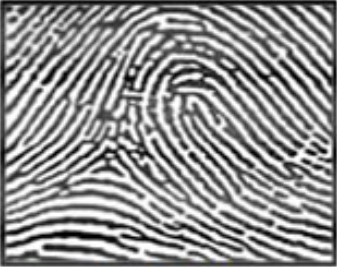
Ulnar Loop
The ridges flow toward the pinky finger, creating a looping pattern that opens in the direction of the little finger.
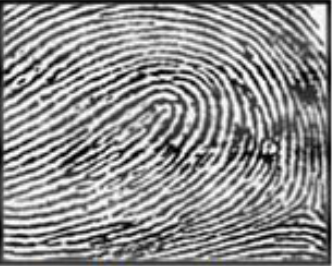
Plain Whorl
A type of print pattern that consists of one or more friction ridges making a complete circuit and two deltas; an imaginary line drawn between the two deltas touches or crosses at least one recurving ridge within the inner pattern area.
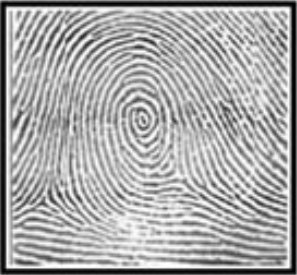
Central Pocket Whorl
A type of print pattern that has two deltas and at least one friction ridge that makes one complete circuit, which may be spiral, oval, circular, or any variant of a circle; an imaginary line drawn between the two deltas does not touch or cross the “central pocket” (the recurving ridges within the inner pattern area).
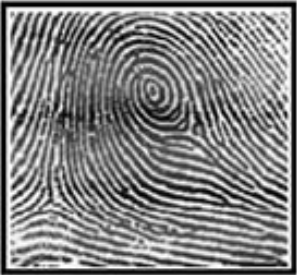
Accidental Whorl
A type of print pattern consisting of the combination of two different types of patterns (excluding the plain arch) with two or more deltas; or a print pattern type that possesses some of the requirements for two or more different types of patterns; or a print pattern type that conforms to none of the definitions of a pattern.
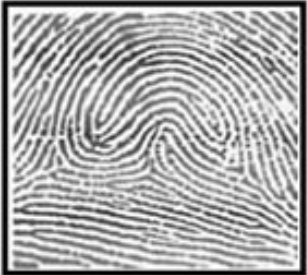
Double Loop Whorl
A type of print pattern that consists of two separate loop formations with two separate and distinct sets of shoulders and two deltas.
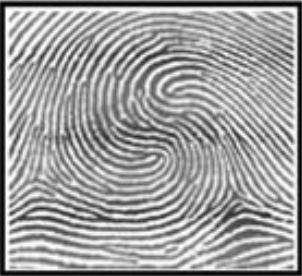
Iodine Fuming
One of the earliest methods of fingerprint development, this method uses iodine to visualize latent fingerprints. It is fast and inexpensive, reacting with body fats and oils in prints. Iodine is a solid but it easily sublimes, forming a dark purple vapor. By placing the fingerprint in a chamber with some iodine, the iodine vapor will adhere to the oils in the fingerprint. This produces a temporary fingerprint that will fade in a few days. To "fix" the fingerprint and keep it permanently, the fingerprint is then treated with a starch solution which reacts with the iodine and turns black. This method of development works well on surfaces like paper or cardboard.
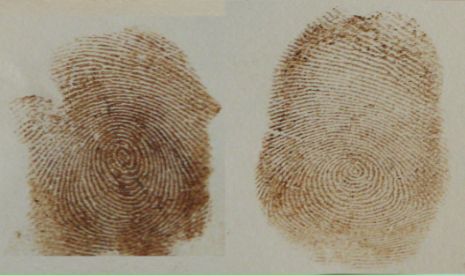
Ninhydrin
A chemical method that is useful for lifting latent prints on paper. The object with the print is dipped in or sprayed with ninhydrin, then left to develop for 24 hours. It reacts with amino acids left behind in prints and results in purple fingerprints.
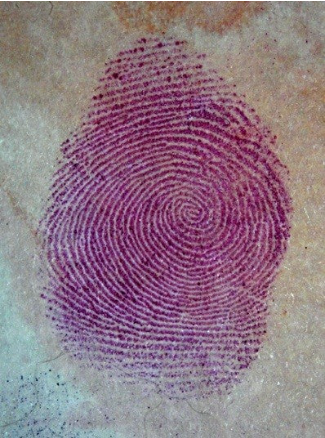
Cyanoacrylate Fuming
This form of development utilizes cyanoacrylate (CA), also known as superglue. A special chamber is used, and the CA is heated in order to form a vapor. This vapor will react with moisture and organic molecules in the fingerprint, forming a white fingerprint. This works best on nonporous surfaces like glass, plastic, and metal.
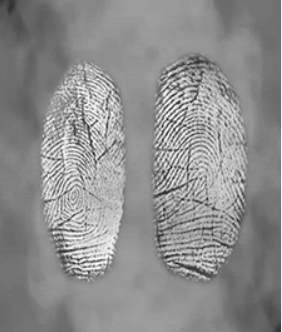
Minutiae
Small features of fingerprint ridges, separate from the main fingerprint pattern.
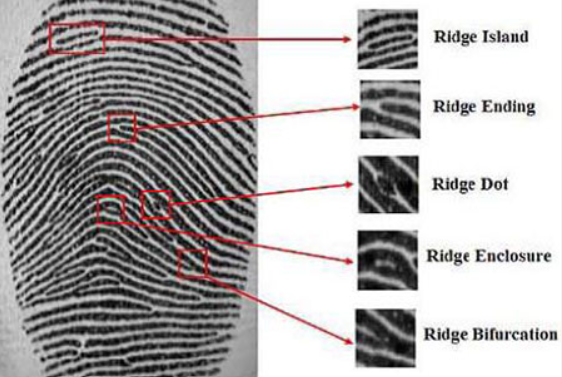
Ridge Ending
A ridge that ends abruptly

Dot
A ridge with approximately equal length and width

Spur
A bifurcation where a short ridge branches off of a larger ridge

Bridge/crossover
A short ridge that runs between two parallel ridges

Delta
A Y-shaped formation where two ridges meet
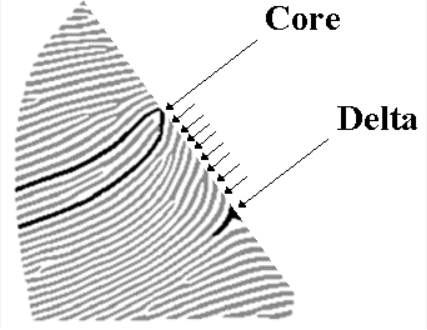
Core
A circle in the ridge pattern (seen in whorls)
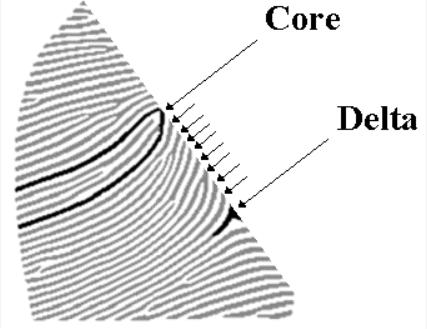
Bifurcation
A single ridge that divides in two

Ridges
The recognizable pattern of the ridges found in the end joints of fingers that form lines on the surfaces of objects in a fingerprint.
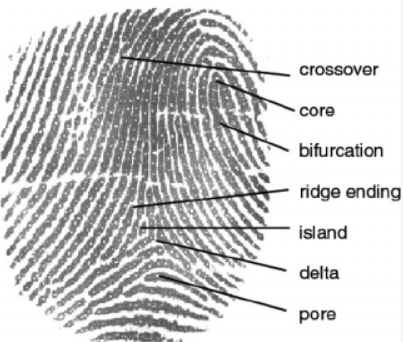
Island
A single small ridge that is not connected to other ridges

Enclosure
A ridge that bifurcates and then reforms to continue as one ridge

Loop
Have only one delta. The difference between an ulnar and a radial is that ulnar "enter and exit" on the side facing the pinky (the side of the wrist containing the ulna) while radial do so on the side facing the thumb (the side of the wrist containing the radius). This is the most common fingerprint pattern, with around 65% of fingerprints being.
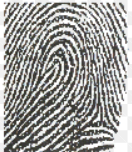
Whorl
Have two or more deltas. The presence of more than two deltas indicates an accidental. To distinguish between plain and central pocket, draw a line between the two deltas on the fingerprint. If the line intersects with the central pattern (the swirling part), it is a plain. If it does not, it is a central pocket. Double loop are easy to identify, since they have two loop patterns in the core area. Make up around 30% of fingerprints.
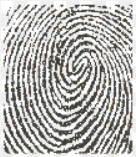
Arch
Have no deltas. The ridges rise in the center of the fingertip. Tented are easily distinguishable by the triangular core (though this is different from a delta). They are the rarest fingerprint, with only around 5% of fingerprints.
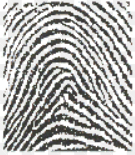
Epidermis
The most superficial layer of the skin and provides the first barrier of protection from the invasion of substances into the body. Is subdivided into five layers or strata.
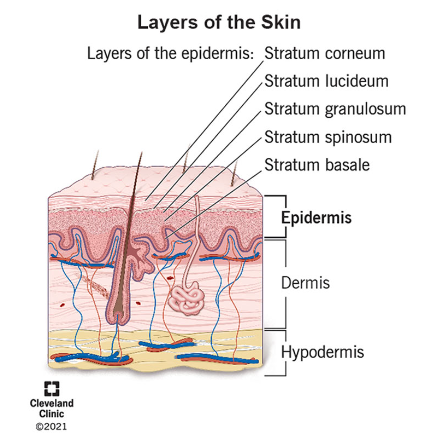
Dermis
A connective tissue layer sandwiched between the epidermis and subcutaneous tissue. Is a fibrous structure composed of collagen, elastic tissue, and other extracellular components that include vasculature, nerve endings, hair follicles, and glands.
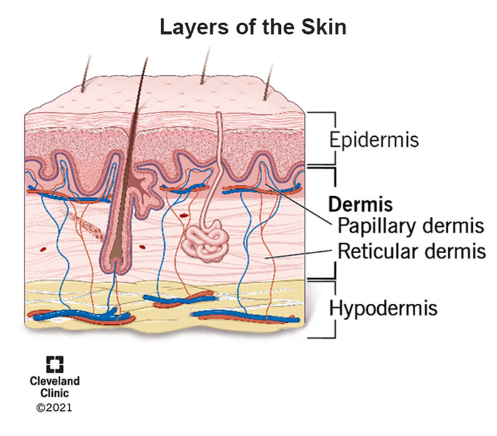
Hypodermis
Also known as the subcutaneous fascia, is located beneath the dermis. This layer is the deepest skin layer and contains adipose lobules, sensory neurons, blood vessels, and scanty skin appendages, such as hair follicles.
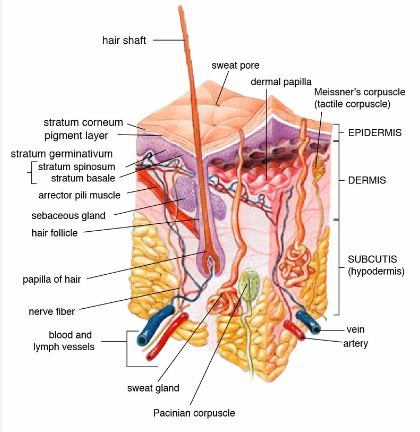
Stratum corneum
(cornified layer) is the outermost layer of the epidermis. It is formed from dead cells almost entirely filled with keratin. These cells are continuously shed and replaced.
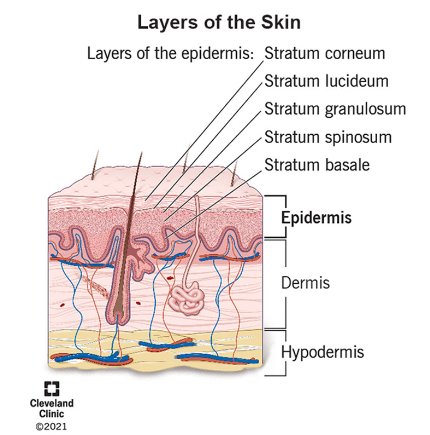
Stratum lucideum
(clear layer) is an additional layer only present in thick skin.
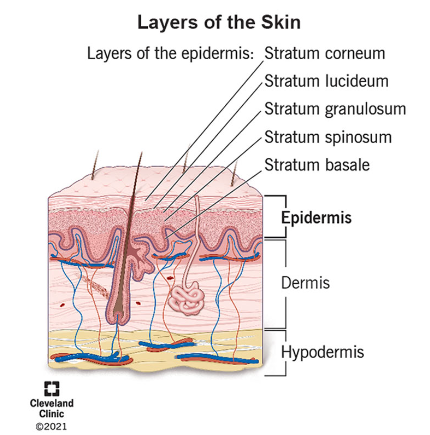
Stratum granulosum
(granular layer) is where keratin filaments that were formed in the stratum spinosum are bound together. Cells begin to die once they reach this layer of the skin, as they no longer receive nutrients from the capillaries in deeper layers.
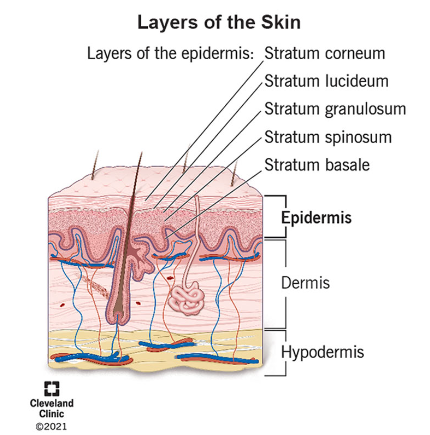
Stratum spinosum
(spiny layer) is a layer featuring cells bound together in structures called desmosomes. Keratin production begins when cells are in this layer.
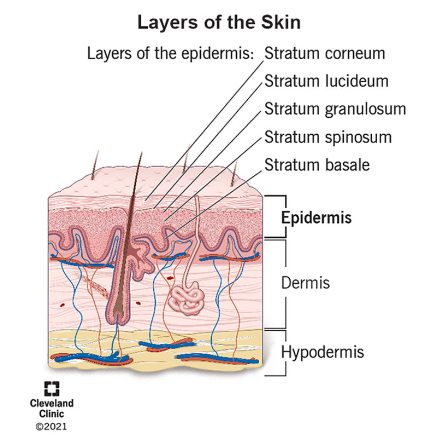
Stratum basale
(basal layer) is the innermost layer of the epidermis. This is the layer responsible for fingerprint formation in the womb. When the basal cells present in this layer form ridges, small projections called epidermal ridges form. This also helps the epidermis obtain nutrients from the dermis.
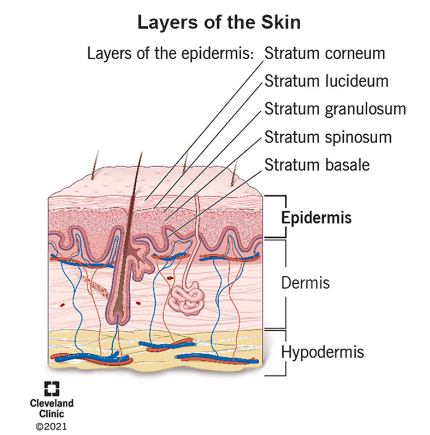
Fingerprint Formation
They are formed during fetal development when the middle (basal) layer of skin cells starts to grow faster than the layers above it, forming ridges. There are three points on the finger where these ridges can originate: the center of the fingertip, the end of the fingertip, and the crease between the fingertip and the final joint of the finger. Depending on when and how each location forms ridges, this will determine the pattern an individual's fingerprint has. An individual's fingerprint is also influenced by external factors like genetics and density of amniotic fluid in the womb, making every set of fingerprints unique.
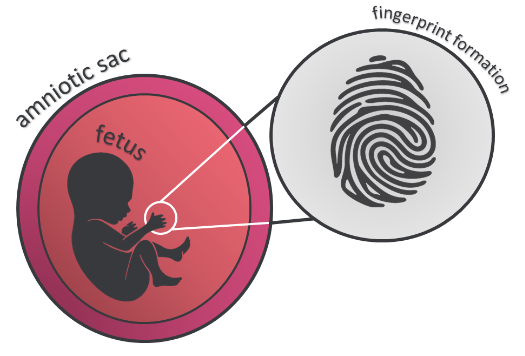
Visible/Patent Fingerprint
As the name suggests, these ones can easily be seen because they were made with a substance like ink or blood. They can also easily be photographed without development.

Plastic Fingerprint
Made in soft material such as clay. Less easy to detect than visible fingerprints, but can still be photographed without development.
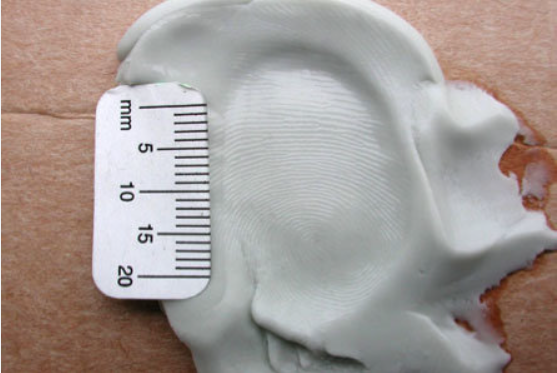
Latent Fingerprint
Invisible fingerprints. These must be developed before photographed.
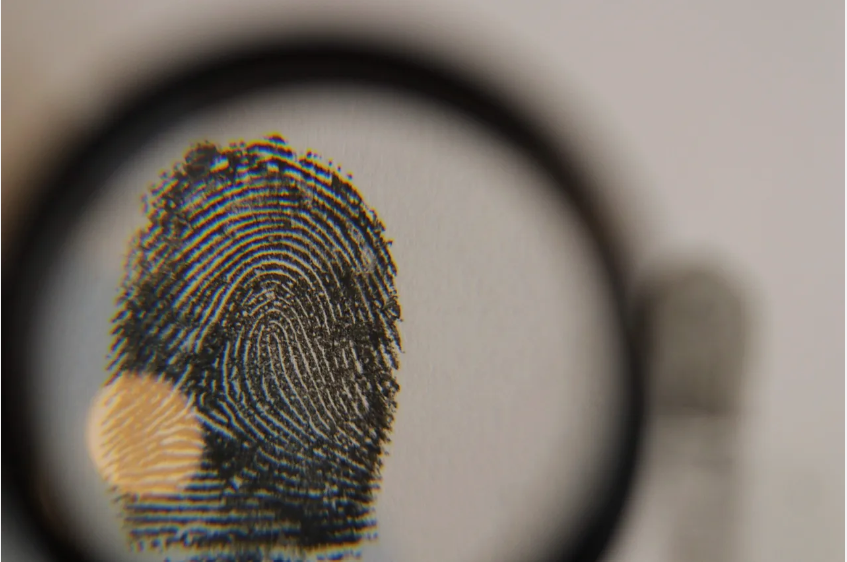
Dusting
Powder applied to prints sticks to fatty acids and lipids. Generally, this method involves using a special brush, usually made of camel hair, to lightly spread the powder over the area where prints may be found, usually smooth or nonporous surfaces. There are numerous different fingerprinting powders used, and their usages vary depending on the surface and the scene environment. For example, it would make more sense to use a dark-colored powder on a light-colored surface or a fluorescent powder on a dark-colored surface. The exact compositions of such powders vary, as most formulas are kept proprietary by their manufacturers.
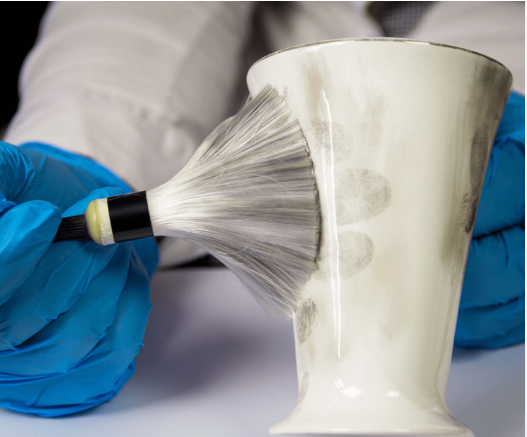
Silver Nitrate
The object with the fingerprint is dipped in or sprayed, which reacts with chlorides in the fingerprint and turns grey when exposed to light. This technique is commonly used for surfaces like wood or styrofoam.
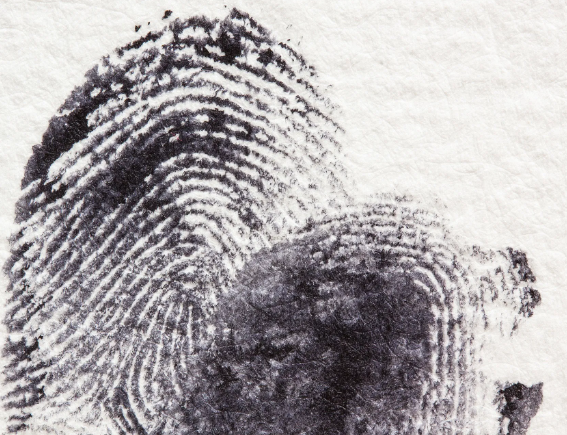
Small Particle Reagent (SPR)
Not as common as the other methods used, but still important. Is used for wet surfaces and reacts with the lipids present in fingerprints.
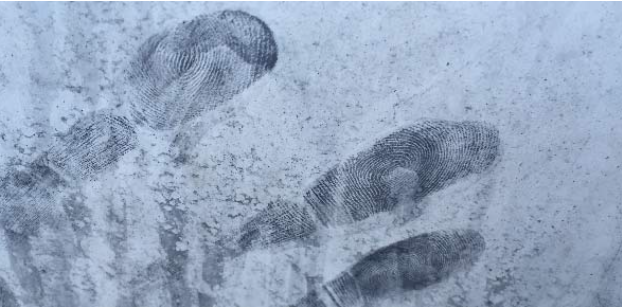
Wetwop
A special pre-mixed liquid formula that is designed to lift latent prints on the sticky sides of adhesive surfaces (i.e. most kinds of tape)
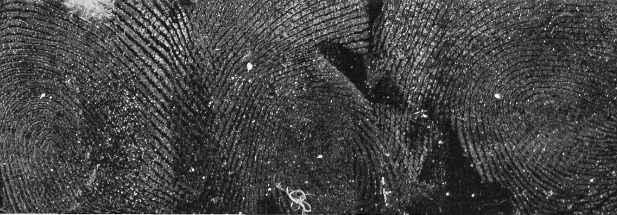
Alternate Light Sources
Lasers and LEDs in combination with certain filters or dyes are used to reveal the location and pattern of fingerprints.
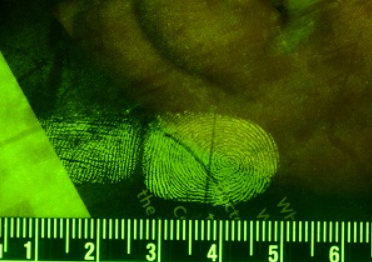
Columnar Thin Film (CTF)
Deposits a thin-film coating on the fingerprint in a specific chamber, allowing for preservation of the ridges and topography of the fingerprint.
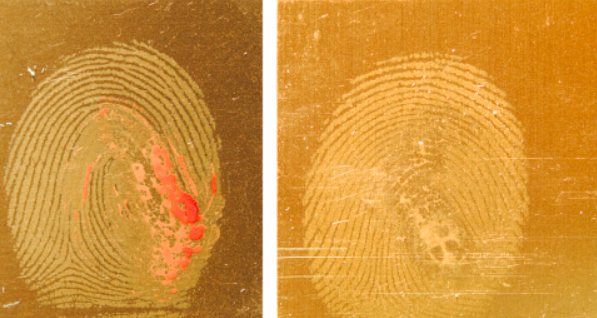
Fingerprint Chemistry
The word "fingerprint" mostly refers to the impression left behind when a finger interacts with a surface. Fingerprints are made mostly of sweat and water, but can also contain various organic and inorganic compounds like amino acids or ions. These trace compounds are essential when it comes to fingerprint development, or the process of making invisible fingerprints visible. Some fingerprints can be seen with the naked eye, but others can't.
Skin
Has three major layers: the epidermis, the dermis, and the hypodermis. The epidermis is the outermost layer, while the hypodermis is the deepest layer. There are two types, thick and thin. Thick is found on the fingertips and palms of the hands and soles of the feet. This is what fingerprints are made of. The most important layer is in the context of fingerprints is the epidermis, which is the outer layer. Cells begin their life in the basal layer and are constantly pushed upwards, moving through the layers. This ensures that dead skin cells can be shed and replaced.
